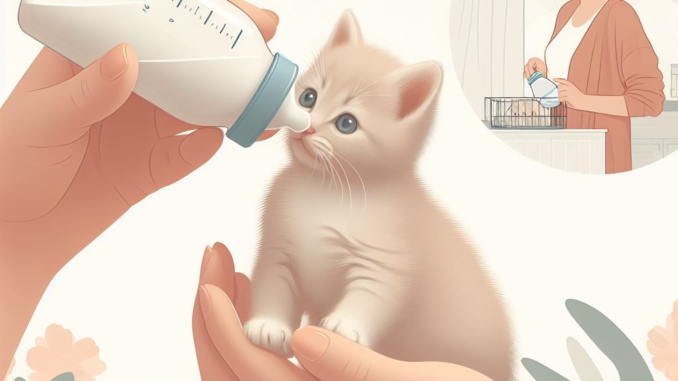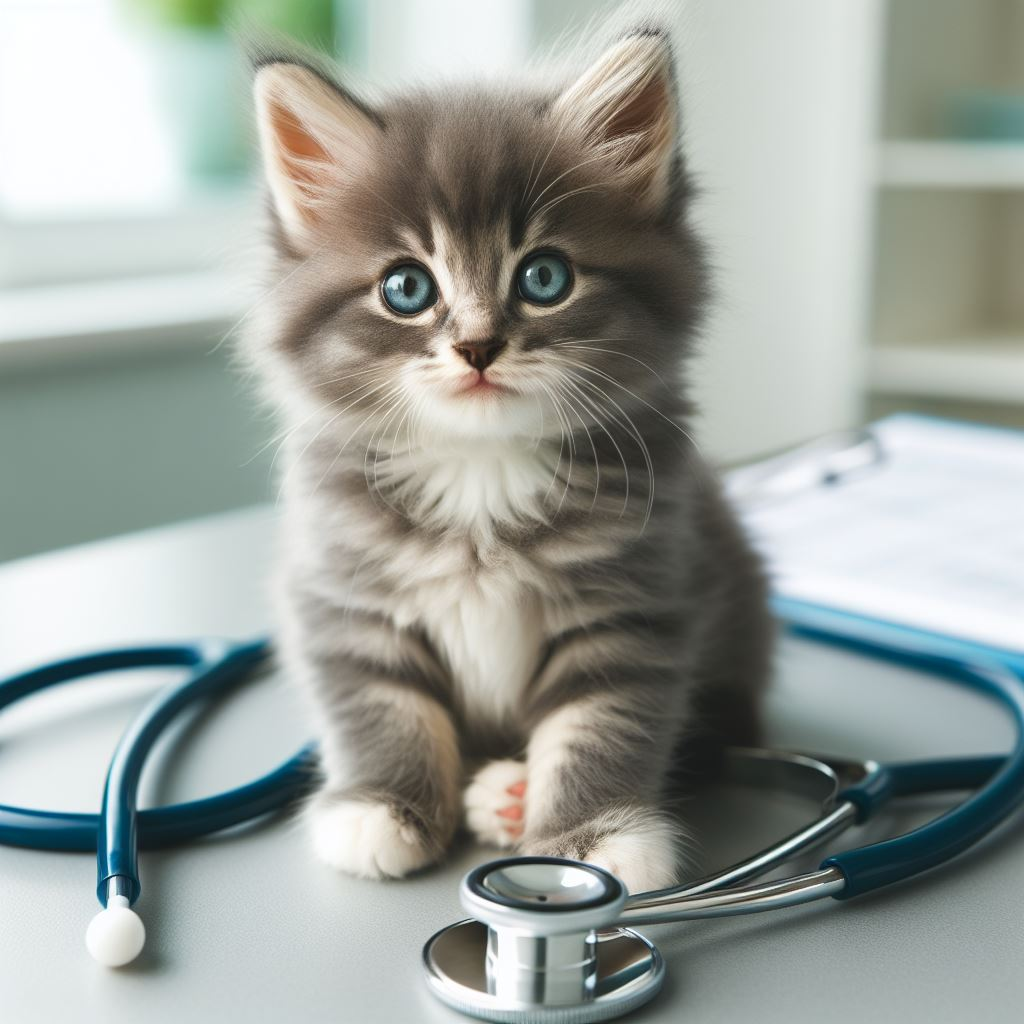
Tips for Bottle Feeding Kittens
Hey there! Taking care of little newborn kittens who don’t have access to their mama cat can be an incredibly rewarding experience. But it’s also a big responsibility – their lives are literally in your hands! As someone who has bottle-fed many orphaned litters, let me walk you through the most important things you need to know to raise happy, healthy kittens.
Choosing the Purrfect Formula and Bottle

First things first, you’ll need to get the right supplies. Cow’s milk and human baby formula may seem logical, but they don’t provide the nutrients kittens need. You’ll want a specially formulated kitten milk replacement that mimics mama cat’s milk as closely as possible. And don’t skimp on cheap generic brands – spend a few extra bucks for a high-quality formula from a reputable company.
When it comes to bottles, look for ones specifically designed for kittens, with nipples that have small holes sized for their little mouths. Test a few bottles out to find the flow rate that works best. The last thing you want is formula gushing out so fast they end up with tummy troubles!
Pro Tip
“Warm the formula so it’s between 100-102 degrees F. Anything hotter can burn their delicate throats.”
Mastering the Feeding Technique
The way you position the kittens during feeding is so important. Mama cats nurse their babies while lying on their bellies, so you’ll want to emulate that. I like to bundle them snugly in a blanket or towel, leaving just their little heads poking out. Then hold the bundle in one hand and the bottle in the other.
Let the kittens latch onto the nipple themselves – don’t force it or try pouring formula into their mouths. Feed them at their own pace, letting them suckle and take breaks as needed. And keep a close eye to make sure they don’t drink too fast or too slow.
If you need to feed multiple kittens, whether they’re from the same litter or two litters you’ve taken in, feed them one at a time. It takes practice to get the positioning and pacing just right!
Pro Tip
“Avoid feeding kittens on their backs like human babies – it’s unnatural for them and can cause formula to get into their lungs.”
Creating a Custom Feeding Schedule
In that first week of life, kittens need to eat every 2-3 hours around the clock. I know it’s exhausting for us humans! But as they grow bigger and stronger, the intervals between feedings can gradually increase. There are general guidelines, but each kitten is unique so you’ll need to tailor schedules to their needs.
For example, I took in 3-week-siblings named Peanut and Butter last spring. Although they were the same age and from the same litter, Peanut was tiny, while her brother was a little chunker. She needed more frequent feedings than him to ensure she was getting enough nutrition to thrive.
So, pay close attention and track each kitten’s eating patterns, weight gain, elimination, and activity levels. Let their health and development guide your feeding schedule rather than sticking to a rigid one-size-fits-all timeline. If you notice any issues like lack of weight gain or low energy, it likely means they need more frequent meals.
Pro Tip
“Weigh kittens daily at the same time using a kitchen scale to accurately track weight gain.”
Caring Steps Post-Mealtime
Feedings are just one piece of the puzzle. After the last drop of the formula is gone, there are a few crucial things mama cat would do if she were there:
Kittens can’t pee or poop on their own initially, so you’ll have to step in. Gently massage their bottoms with a warm, damp cloth to stimulate elimination. Make this a part of your routine after every feeding.
You’ll also want to burp them just like a human baby by gently rubbing and patting their backs. And if they have any formula left on their face, use a soft cloth to wipe them up so they stay nice and clean.
Pro Tip
“Keep detailed records tracking each kitten’s feedings, elimination, and weight so you can monitor health and make adjustments.”
Introducing Solid Foods and Weaning
Starting around 4 weeks old, kittens show interest in nibbling solid food. At first, it is more playing than actual eating, but this is an important developmental stage. Place a shallow dish of wet kitten food in their space so they can discover it and sample tastes and textures.
Between 4 to 6 weeks is when you can start slowly reducing bottle feedings as you transition fully onto solids. Pay attention to signs of readiness – the more interest they show in solid foods, the more you decrease the bottle.
Expect messy antics and even some digestion struggles at first. Their little tummies need to adjust to processing new foods. Have some canned pumpkin or yogurt on hand to help ease any upset. And consider mixing a little wet food with formula to help ease the transition to texture.
Pro Tip
“Don’t go cold turkey off bottle feeding – decrease gradually over days or weeks based on each kitten’s progress.”
Raising Strong, Healthy Kittens
As you care for your kittens through bottle feeding and beyond, keep these additional tips in mind:
– Weigh them daily and track eating, peeing, and pooping religiously – any changes could signal health issues.
– Keep them warm using heating pads, incubators, or your own body heat (just be sure not to ever sleep with them in bed – you could crush them!).
– Stimulate peeing and pooping before/after every feeding with a warm, damp cloth.
– Have an emergency vet fund available. Newborns are fragile and can go downhill fast if they are sick.
Understanding Kitten Growth and Milestones
As you care for your kittens in these critical early weeks, it’s important to understand key developmental milestones so you know what to expect as they grow:
In weeks 1-2:
- Kittens are born blind, deaf, and unable to regulate their own body temperature or eliminate waste.
- They sleep over 90% of the time and rely completely on touch and scent.
- The focus is on regular bottle feeding, keeping kittens warm, and helping them eliminate.
In weeks 3-4:
- Eyes open between 8-14 days and they gradually become more alert to sights and sounds in their environment.
- They start to crawl and walk in an uncoordinated, wobbly fashion. Lots of nurturing and “physical therapy” is needed to build strength.
- You may notice teeth starting to come in around 3 weeks. Kittens bite and chew on everything as they teeth!
In weeks 5-8:
- Kittens become increasingly curious, exploring environments more actively and learning to run, jump, and climb with better coordination.
- Socialization with gentle human handling and exposure to household sights and sounds is crucial during this period.
- Weaning off formula and transitioning to solid food occurs, along with early litter box training.
So in summary, the first 2 weeks focus heavily on nurturing care and bottle feeding. Weeks 3-5 bring major physical milestones. In weeks 6-8, intensive introductions to solid foods, potty training, and socialization prepare them for adoption.
It’s incredible watching them transform from helpless newborns to active, mischievous kittens ready for their forever homes!
Preparing Your Kittens for Adoption
If you’re fostering these kittens with the goal of putting them up for adoption once they’re big enough, there are important steps you can take to set them up for success in their new homes:


Leave a Reply